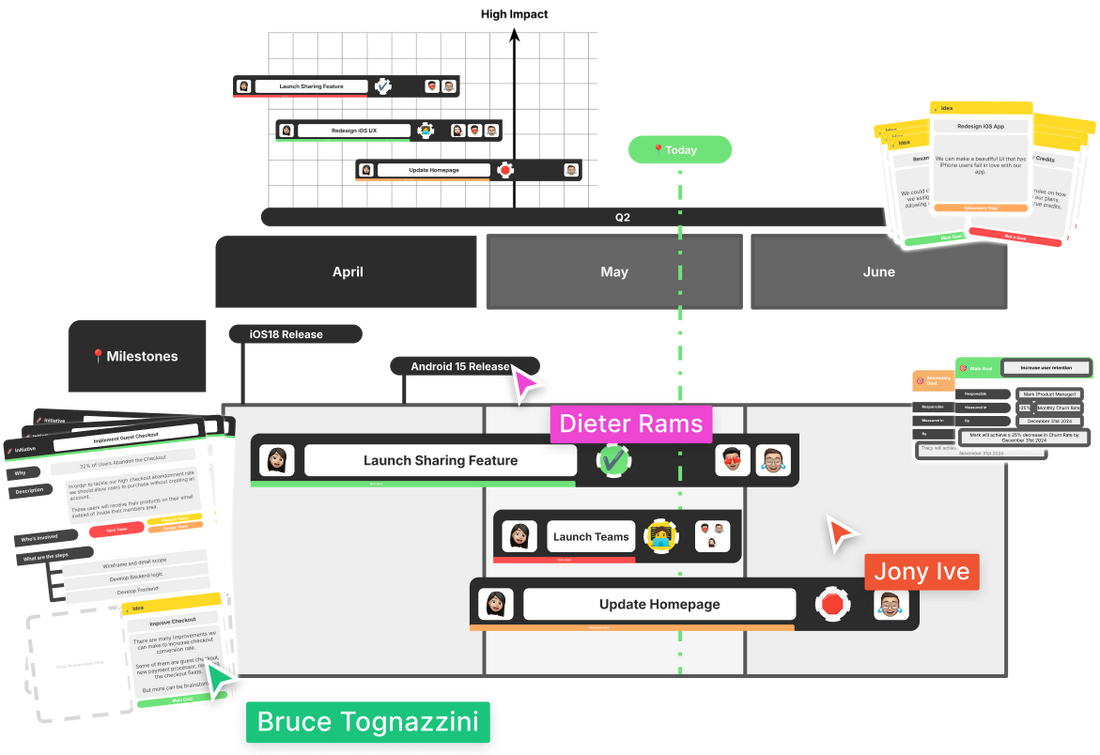
Prioritizing all your ideas using a IE Matrix
Let’s introduce a game-changing tool: the IE Matrix.
It’s like having a strategic roadmap for your business, helping you figure out where you stand and what steps to take next. So, what exactly is the IE Matrix and how can it help your startup? Let’s break it down.
What's the IE Matrix?
The IE Matrix stands for Impact-Effort Matrix. Think of it as a simple 2x2 grid where you plot every idea your team has. The vertical axis measures impact. The horizontal axis measures effort. Each idea gets placed somewhere on this grid based on these two factors.
 Here’s why this matters for small teams: You have limited time and resources. Every decision counts. The IE Matrix stops you from wasting months on low-impact projects while quick wins sit ignored.
Here’s why this matters for small teams: You have limited time and resources. Every decision counts. The IE Matrix stops you from wasting months on low-impact projects while quick wins sit ignored.
How does it work?
Start by listing every idea on your backlog. Get your team together. Spend 30 minutes debating each one.
Ask two questions: How much will this move the needle? How much work will it take?
-
High impact, low effort ideas go in the top-left quadrant. These are your quick wins. Do these first. They build momentum and prove value fast.
-
High impact, high effort ideas land in the top-right quadrant. These are your major projects. Plan these carefully. They need dedicated sprints and full team focus.
-
Low impact, low effort ideas sit in the bottom-left. These are your fill-ins. Do them when you have spare capacity or when waiting on other work.
- Low impact, high effort ideas fall in the bottom-right quadrant. Kill these. They drain resources and deliver nothing. No matter how attached you feel to them.
Why is this great for a startup?
It forces honest conversations. Marketing wants a new landing page. Development wants to refactor code. Sales wants a custom reporting feature. Put them all on the matrix. Let data decide.
How to use it?
Update your matrix monthly. Your business changes. What seemed high-impact last quarter might be irrelevant now. Stay flexible.
Use a simple tool to track this. A whiteboard works or even a shared spreadsheet. The format matters less than the habit of evaluating everything through this lens.
Small teams need focus.
The IE Matrix gives you that focus. It stops feature bloat. It prevents scope creep. It keeps everyone aligned on what matters.
Your competitors are doing everything at once. You’re doing the right things in the right order. That’s your advantage.
Where to get started?
The SuperFast Roadmap incorporates all these methods into a beautiful straigthforward board for Miro, Figjam and Google Slides where you can start using the IE Matrix today.
Plot your current projects. You’ll spot problems immediately. Some high-effort, low-impact work is already in progress. Stop it. Redirect those resources to quick wins.
The best part: This takes 30 minutes to set up and saves you months of wasted work.